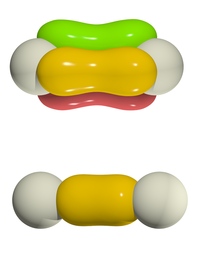Wannier function

Have you ever played with building blocks? You can make different shapes with them, right? Well, just like building blocks, when we have a bunch of atoms together, they can also form different shapes. And these shapes are called electronic wave functions.
But these wave functions can be a little complicated to work with. So, scientists came up with something called the Wannier function to make it easier. Think of the Wannier function as a way to simplify the wave function into different building blocks that we can work with.
Let's say we have a bunch of atoms together, like in a crystal. Each atom has electrons moving around them, right? Well, the Wannier function helps us figure out where each electron is and how it's moving around the atoms.
To do this, we take a bunch of electronic wave functions and combine them in a special way. It's kind of like putting together a puzzle. We fit the pieces together until we have different building blocks that tell us where each electron is in relation to the atoms.
Now that we have these building blocks, we can use them to understand how electrons move and interact with each other in complex materials. And this is really helpful for scientists who want to study things like superconductors or magnets.
So, the Wannier function is kind of like a tool that helps us understand how electrons move around atoms in materials. It's like putting together building blocks to create a picture, and it helps us make sense of something that can be really complicated.
But these wave functions can be a little complicated to work with. So, scientists came up with something called the Wannier function to make it easier. Think of the Wannier function as a way to simplify the wave function into different building blocks that we can work with.
Let's say we have a bunch of atoms together, like in a crystal. Each atom has electrons moving around them, right? Well, the Wannier function helps us figure out where each electron is and how it's moving around the atoms.
To do this, we take a bunch of electronic wave functions and combine them in a special way. It's kind of like putting together a puzzle. We fit the pieces together until we have different building blocks that tell us where each electron is in relation to the atoms.
Now that we have these building blocks, we can use them to understand how electrons move and interact with each other in complex materials. And this is really helpful for scientists who want to study things like superconductors or magnets.
So, the Wannier function is kind of like a tool that helps us understand how electrons move around atoms in materials. It's like putting together building blocks to create a picture, and it helps us make sense of something that can be really complicated.
Related topics others have asked about:
